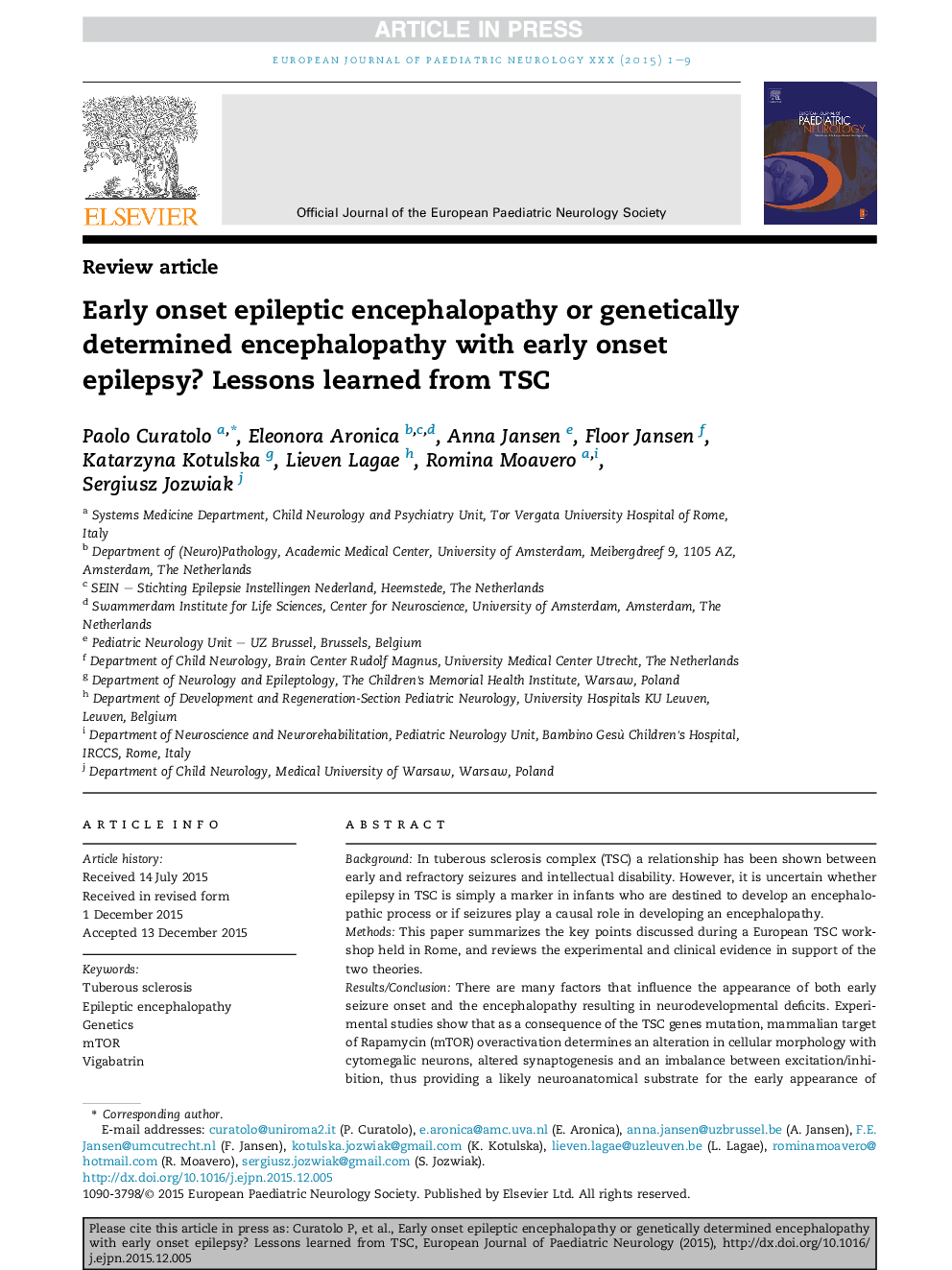| Article ID | Journal | Published Year | Pages | File Type |
|---|---|---|---|---|
| 6016563 | European Journal of Paediatric Neurology | 2016 | 9 Pages |
Abstract
There are many factors that influence the appearance of both early seizure onset and the encephalopathy resulting in neurodevelopmental deficits. Experimental studies show that as a consequence of the TSC genes mutation, mammalian target of Rapamycin (mTOR) overactivation determines an alteration in cellular morphology with cytomegalic neurons, altered synaptogenesis and an imbalance between excitation/inhibition, thus providing a likely neuroanatomical substrate for the early appearance of refractory seizures and for the encephalopathic process. At the clinical level, early signs of altered developmental trajectories are often unrecognized before 12 months of age. Evidence from experimental research shows that encephalopathy in TSC might have a genetic cause, and mTOR activation caused by TSC gene mutation can be directly responsible for the early appearance of seizures and encephalopathy.
Related Topics
Life Sciences
Neuroscience
Developmental Neuroscience
Authors
Paolo Curatolo, Eleonora Aronica, Anna Jansen, Floor Jansen, Katarzyna Kotulska, Lieven Lagae, Romina Moavero, Sergiusz Jozwiak,
